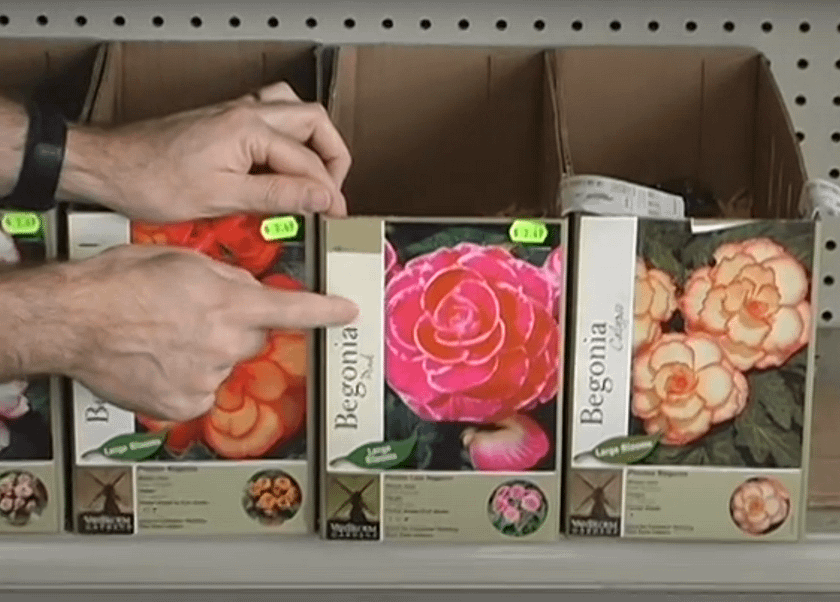Caring For Tuberous Begonias

Tuberous begonias come in a variety of shapes and colors. Ruffled, rose, and picotee style flowers range in every color but blue and purple (bi-colors are also common). Some varieties work perfectly in hanging baskets; others prefer the garden or a container. No matter which kind you choose, the plants will produce an abundance of long lasting, large, showy flowers. Once they start blooming, they won’t stop all summer. And don’t forget the best part of growing begonias – they love the shade.
When selecting your bulbs, choose tubers that are firm, but have a little give to them–it should feel alive in your hand. Generally, the larger the bulb, the more it will produce, but this is not always the case with begonias. Your best bet is not to search for the largest bulb. Instead, find the ones with small sprouts starting to form, or if they haven’t begun sprouting, just select the most healthy looking specimens.

Most gardeners will start their begonias about 8-10 weeks before the last frost, then not set them outside until 2 weeks after planting tomatoes, just to be safe. Take a flat about 3 inches deep (you could probably get 10-12 bulbs in a flat) or use 4-5 inch peat or plastic pots and fill them with a mixture of half peat moss and half vermiculite, then thoroughly moisten the mixture (but make sure it’s not too soggy). A good, light potting mix would work well also. Place the begonia tubers, hollow side up, into your potting mix, pushing them down until their tops lie just above the surface. Place the pots or flat in an area where the temperature will stay between 50° and 70°, and where the bulbs will receive at least 3-4 hours of light, but not direct sunlight. Make
sure to keep the bulbs moist, but not wet. When watering, moisten the soil, and not the bulb. If water accumulates on the bulb, it could start to rot or mold.
When your plants have grown to 3-5 inches, and the first two leaves are equally developed, they are ready for transplanting (weather permitting). If you are using containers, be sure to use a good potting mix. Ifyou plan to transfer them directly into the garden, a 4 inch layer of peat moss, lightly tilled in before planting, would do wonders. In either case, take care not to damage the tender root systems when transplanting. Plant the tubers approximately 1 inch below the surface and about 12 inches apart in the flowerbeds. In containers or hanging baskets, 2-4 bulbs per 14-16 inch pot would work well.
When selecting an outdoor location for your begonias, there are six key elements that will help your bulbs perform their best.
- Begonias like the shade. Direct morning sun is fine but begonias should have full shade from the hot, afternoon sun. Too much sun and they might get a sunburn (which they don’t tolerate well at all).
- While begonias like moist soil, they don’t like a prolonged bath. Make sure your soil drains well, especially after heavy rains or watering.
- Begonias love humidity. Choose a warm, humid location where your plants won’t dry out quickly.
- A rich, humus soil is a must. If possible, always try and amend your soil with peat moss or compost. A little sand (for drainage) wouldn’t hurt either.
- Begonias need good air circulation, but they should also have protection from wind. The stems, leaves, and flowers are delicate and snap easily when subjected to strong winds.
- Plant the bulbs so that the pointed tips of the leaves aim the direction you want the flowers to show. If you plant them with the leaves pointed into the house, that is the side where the flowers will appear.


